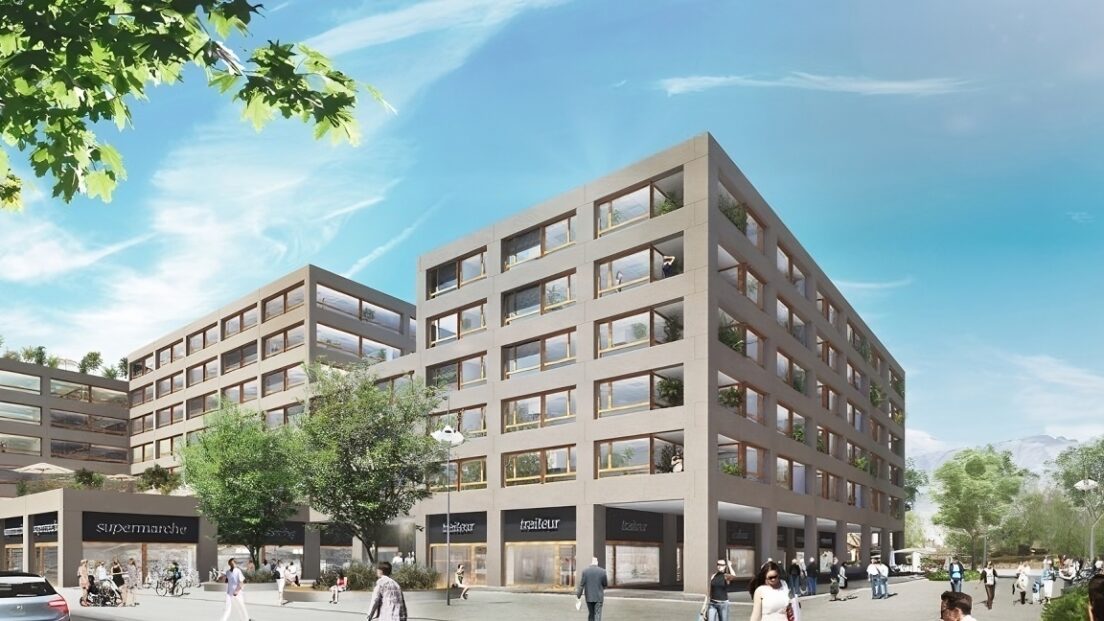Urban development of the major Communaux d’Ambilly project

The Belle-Terre district in Thônex, a major project of the Communaux d'Ambilly, plans to create 2,400 new homes by 2030. This urban development project is a benchmark for sustainable development and participatory planning.
The major Communaux d’Ambilly project, now known as the Belle-Terre district, involves the urban development of a 36-hectare area in the commune of Thônex. Around 2,400 new homes are expected to be built there by 2030.
This urban development project offers one of the few major land opportunities in the first ring of the left bank of the Geneva conurbation. Thanks to its proximity to the Léman Express stations at Chêne-Bourg and Annemasse, the area will be perfectly connected to the whole of the conurbation and the region.
The stages of development
The first stage of the project, based on a Local Neighbourhood Plan (PLQ) adopted in 2011, saw the construction of around 670 homes, as well as shops, local services, a school and extensive public spaces. This phase also included the creation of a central alignment of 180 tall trees. Access to the site is provided by two new streets: Chaussée des Cornouillers and Allée Belle-Terre.
The second phase is currently being prepared, with plans to develop a further 1,000 homes and new services by 2028. The third phase should see the construction of a further 1,000 homes by 2030. These developments will be supported by the development of public transport, in particular a BRT (Bus Rapid Transit) line, and by the extension of school infrastructure.
Participatory planning
A central aspect of the Belle-Terre project is the participatory planning process. This allows current and future residents and users of the area to contribute their experiences and ideas to the development of the project. This participatory approach fosters good living together and the sustainable development of the neighbourhood.
An environmentally friendly approach
The Belle-Terre district attaches great importance to sustainability and environmental protection. 50% of the area is dedicated to nature, over 450 new trees have been planted and a participatory forest has been set up. Geothermal energy and solar panels cover 90% of energy needs, while ditches, green roofs and permeable surfaces optimise the water cycle. An impressive 95% of the excavated material has been reused on site, considerably reducing the environmental impact.
The development of the district includes a harmonious mix of rural courtyards and planted promenades that create landscape continuities and link the district to the Seymaz river and the edge of the Belle-Idée forest.